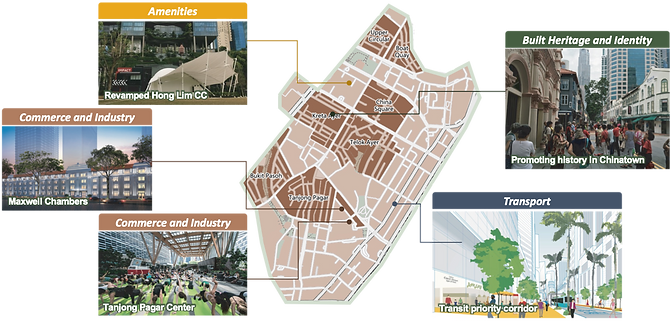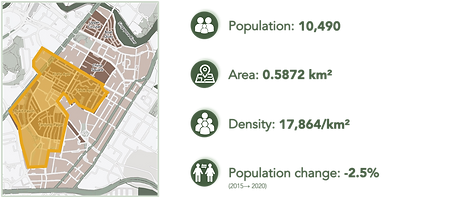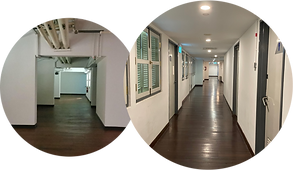SITE ANALYSIS.


MASTER PLAN
Singapore Long-tem Plan Review
Source:URA
According to the Singapore long-term plan review, the upcoming growth of the central area will concentrate on five primary dimensions: Flexibility, Connectivity, Identity, Community, and Sustainability.

The Greater Kreta Ayer region has already made provisions for national landmarks and preserved structures, as well as identity nodes, community areas, and other heritage locations and corridors. These guidelines will aid in the examination, maintenance, improvement, and safeguarding of our heritage resources.

Fig.1 Planning for our heritage and identity
Singapore Central Area Planning
Source:URA

Fig.2 Central Area Planning Districts and Conservation Areas
The Masterplan charts the government’s move towards a reduction in commercial use of the CBD area, by bringing in more mixed usage to the existing spaces and mixed use spaces in new-built areas.

Fig.3 Land use in CBD area
The future evolution of the Downtown area will encompass a broader range of functions and innovative lifestyle options, making it not only a desirable work destination but also a lively place for residential living and leisure activities. This will be achieved through improved accessibility and an upgraded public domain, creating a round-the-clock downtown center and international financial hub.

Fig.4 High-res link in CBD area
In all, the masterplan listed a few development priorities for the area:
-
Upgrading amenities
-
Further distinguishing Singapore as a commerce and industry hub, with a balanced work and play lifestyle
-
Preserving and promoting the built heritage and identity of the district
-
Improving the transport facilities to connect the precinct to the rest of the nation.

Fig 5. Chinatown area in Central Area Planning
Regional and Global trends

REGIONAL ANALYSIS
Macro-regional Analysis
Source:Google Earth
On the west side of the Greater Kreta Ayer Conservation Area, which serves as the cultural axis connecting many historical areas in Singapore, the southernmost part of the conservation area marks the southern endpoint of the cultural axis. The eastern side of Greater Kreta Ayer is partially surrounded by office buildings in the Golden Shoe Financial District, where a large number of people work. High-rise buildings separate main Greater Kreta Ayer from Boat Quay and other surrounding areas.

Fig 6. Current distribution
Transportation Analysis
Source:Google Map
Current Situation
The transportation conditions (MRT and driving system) in the Greater Kreta Ayer area are convenient, with 6 subway stations and 5 subway lines covering the area and multiple urban main roads.
Fig 7. Transportation analysis

 Boat Quay Level: Mid to high-end Key customer: Tourist and office workers Foot traffic: Mid-high Function: Restaurants |  Kreta Ayer Level: Mid-low end Key Customer: Tourist Foot traffic: High Function: Chinese Restaurant & souvenir gathering area |
|---|---|
 Telok Ayer Level: Mid-high Key customer: Office workers Foot traffic: Mid Function: Fine dining, Temple / provincial guild gathering place |  Tanjong Pagar Level: Mid-high end Key customers: Office workers / local residents Foot traffic: Mid-high Function: Korean, Japanese restaurant / new-in brands |
 Bukit Pasoh Level: Mid-high end Key customers: Local Residents Foot traffic: Mid-low Function:Restaurants, private clubs and retail |  Chinatown Square Level:Mid-end Key customer: Office workers Traffic flow: Mid-low Function: Restaurant, retail and office |
Source:Google Map
DEMOGRAPHIC ANALYSIS
Basic Information

Recent statistics reveal that the population of Greater Kreta Ayer stands at 10,490 people, with a population density of 17,864/km². This represents a 2.5% decrease in population compared to 2015. The neighborhood has a high population density, with many people living in small apartments and shophouses.
Fig 8. Chinatown statistic area
The distribution of males and females in Singapore's Greater Kreta Ayer is relatively even, with 59% of the population aged between 15 and 59 years old. However, the proportion of residents over the age of 60 is 26.2%, indicating that the neighborhood is already facing issues related to an aging population.

Fig 9. Gender and Age distribution

In the past, Greater Kreta Ayer in Singapore was predominantly inhabited by Chinese migrants who sought work and better prospects. However, presently, the neighborhood is home to people of diverse nationalities and ethnicities, including Chinese, Malays, Indians, and other groups. The percentage of Chinese residents in Greater Kreta Ayer is relatively high at 83.7%, which exceeds the average for Singapore.
Fig 10. Ethnic distribution
TRADE-MIX ANALYSIS
Distribution

The overall area is primarily focused on retail and food and beverage functions, occupying the highest proportion, mainly concentrated in shophouses in the conservation areas. Office buildings are located in the outer regions, with high-end hotels concentrated in the hotel area, while other hotels are scattered throughout the shophouses, with a generally lower grade overall.
Fig 11. Ethnic distribution
F&B Sector
The F&B sector is centralised in the traditional conservation area, with Boat Quay mostly occupied by restaurants and Kreta Ayer having an equal distribution of restaurants and retail establishments, which are highly uniform in nature.
Each district has its primary cuisine, which has developed due to market demands and the globalization of the "Great Chinatown area." These cuisines will be maintained and utilized to enhance the area's amenities and create distinct food trails, ultimately enhancing the neighborhood's identity.

Fig 12. F&B distribution
Retail Sector
Retail functions are mainly performed by complexes. Larger complexes in the area are relatively old, while new-built ones are small in scale and are mainly used as supporting facilities for office buildings.
A portion of the smaller retail outlets are located in the Kreta Ayer and feature mass-market souvenirs that neither present traditional Chinese culture nor appeal to the spending power of the trendy younger crowd. In fact, there are many long-established businesses in Chinatown, which should subsequently expand their brand influence and use their cultural heritage to upgrade their businesses.
The extension of hawkers from the shophouse to the street is causing congestion and environmental chaos.

Fig 13. Current complexes
Office Sector
Offices in the area are predominantly located on the east and north sides, resulting in an uneven distribution of density.
Due to the low flexibility of the shophouse space, only a small number of micro companies can be attracted.

Fig 14. Vacant Office in shophouse
LIVING CONDITION ANALYSIS
Facilities Distribution
Reference link:
The basic infrastructure related to living conditions, such as parks, community centres, pharmacies, food courts, libraries, and parking lots, in the Chinatown area is relatively well-developed. These facilities provide a safe, convenient, and comfortable living environment for local residents.

Fig 15. Facilities distribution